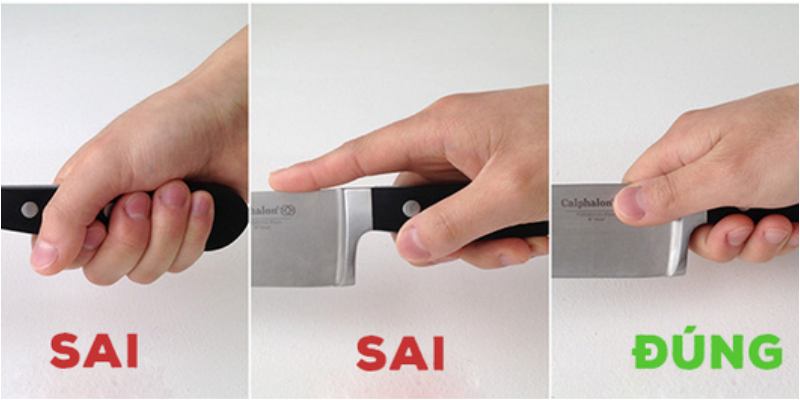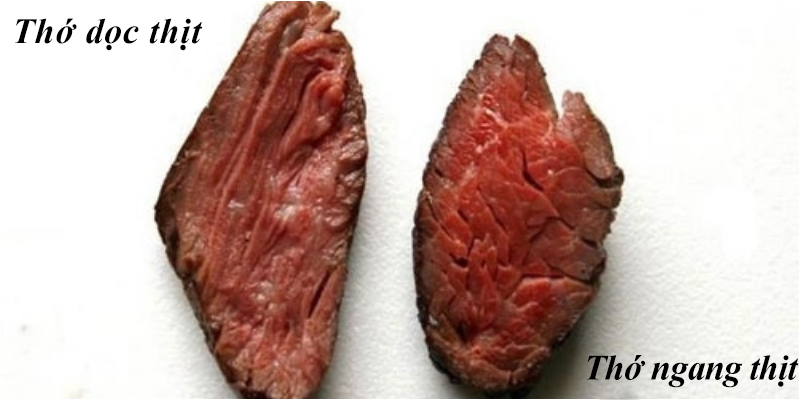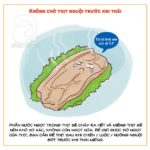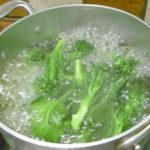Knife Grip
It’s common to place your index finger on the spine of the knife, but this makes it harder to cut and can obstruct your view, leading to accidental cuts. The best practice is to hold the knife straight, with your thumb and index finger parallel and firmly gripping the blade.
 Proper Knife Grip
Proper Knife Grip
Create a Flat Surface Before Chopping
Place your food on a cutting board and cut across to create a flat surface. Then, turn the food over so the freshly cut side is against the board. This stabilizes the food, making it less likely to slip and keeping you safer as you chop.

Cutting Soft Foods with String or Thread
For soft, easily crushed foods, you can use string, thread, or fishing line instead of a knife to prevent them from becoming misshapen. This technique works well for foods like soft tofu, sticky rice cakes, sponge cakes, and cheese.

Cutting a Cake
Before cutting a cake, dip the knife into hot water to prevent the frosting from sticking to it. This will give you cleaner, more attractive slices. To keep the rest of the cake from drying out, cut two parallel lines in the center, remove that section, and cut it into individual servings. Then, push the remaining portions back together, using the frosting to seal in moisture.

Cutting Meat
For those new to cooking, it can be challenging to cut meat as thinly as desired. An easy solution is to place the meat in the freezer for 45–60 minutes after cleaning and drying it. This will firm it up, making it easier to slice. Note that this timing is for meat approximately 3 cm thick; adjust accordingly for thinner or thicker cuts.

You may have heard of cutting meat with the grain or against the grain but might not know what that means. The grain refers to the direction of the muscle fibers in the meat, which are tough and fibrous. Cutting against the grain will give you more tender meat that absorbs flavors better.

For more information, check out: afamily.vn, ione.vnexpress.net
While there’s no special way to cut vegetables, it’s a good practice to separate the stems and tough parts from the leaves. When cooking, add the tougher parts about a minute earlier to avoid overcooking the leafy bits.
Meat Against the Grain?’>Why Cut Meat Against the Grain?
5 Common Cooking Mistakes You Need to Avoid
“Overheating oil, using the same utensils for raw and cooked food, over-stirring, and cutting meat right after boiling are common habits when it comes to food preparation for many people. These practices not only deplete essential nutrients from the food but may also have undesirable effects on one’s health.”






































